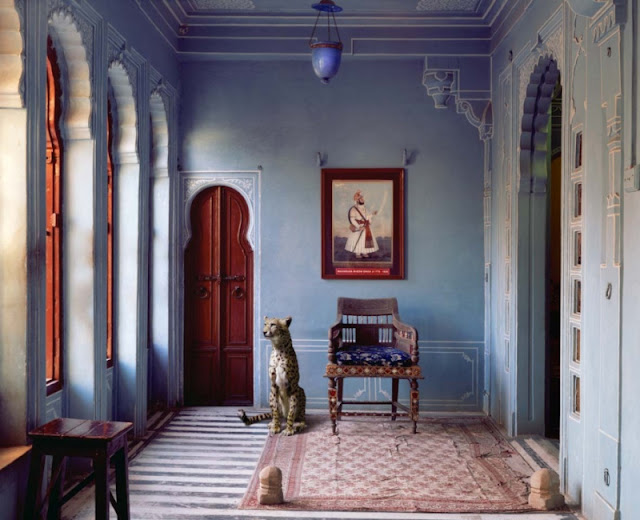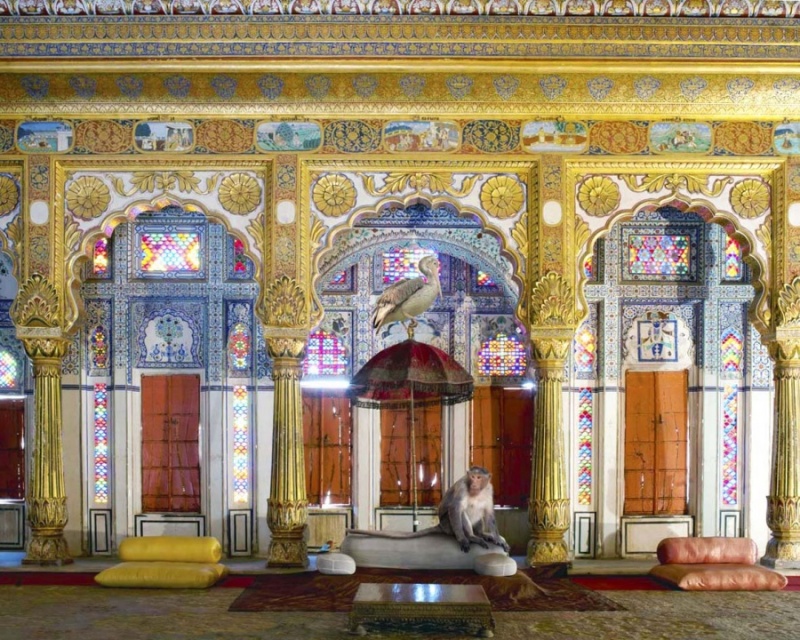Karen Knorr photography - Animals interior design - old time palace

Karen Knorr was born in Frankfurt am Main, Germany and was raised in San Juan, Puerto Rico in the 1960s. She finished her education in Paris and London. Karen has taught, exhibited and lectured internationally, including at Tate Britain, Tate Modern, The University of Westminster, Goldsmiths, Harvard and The Art Institute of Chicago. She studied at the University of Westminster in the mid-1970s, exhibiting photography that addressed debates in cultural studies and film theory concerning the ‘politics of representation’ practices which emerged during the late 1970s qnd early 1980s. She is currently Professor of Photography at the University for the Creative Arts in Farnham, Surrey.
Since her life changing journey to Rajasthan, India in 2008, Karen Knorr’s work is now exploring Rajput and Mughal cultural heritage and its relationship to questions of feminine subjectivity and animality. India Song, a series of carefully crafted photographs explores the past and its relation to India’s contemporary heritage sites across Rajasthan.
Karen Knorr’s past work from the 1980’s onwards took as its theme the ideas of power that underlie cultural heritage, playfully challenging the underlying assumptions of fine art collections in academies and museums in Europe through photography and video. Since 2008 her work has taken a new turn and focused its gaze on the upper caste culture of the Rajput in India and its relationship to the “other” through the use of photography, video and performance. The photographic series considers men’s space (mardana) and women’s space (zanana) in Mughal and Rajput palace architecture, havelis and mausoleums through large format digital photography.
Karen Knorr celebrates
the rich visual culture, the foundation myths and stories of northern
India, focusing on Rajasthan and using sacred and secular sites to
consider caste, femininity and its relationship to the animal world.
Interiors are painstakingly photographed with a large format Sinar P3
analogue camera and scanned to very high resolution. Live animals are
inserted into the architectural sites, fusing high resolution digital
with analogue photography. Animals photographed in sanctuaries, zoos and
cities inhabit palaces, mausoleums , temples and holy sites,
interrogating Indian cultural heritage and rigid hierarchies. Cranes,
zebus, langurs, tigers and elephants mutate from princely pets to
avatars of past feminine historic characters, blurring boundaries
between reality and illusion and reinventing the Panchatantra for the
21st century.




















0 comments:
Post a Comment